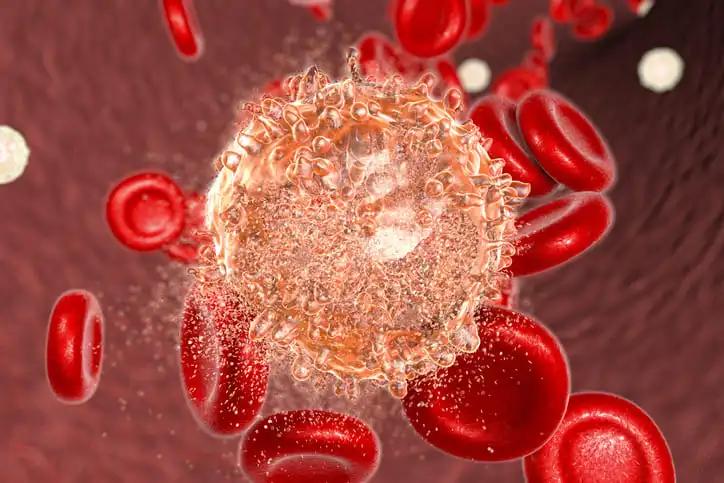KEY TAKEAWAYS
- The study aimed to investigate the potential of NIQs in inhibiting NF-κB activity to treat AML patients.
- Researchers noticed that Dioncophylline A exhibits potent cytotoxicity against leukemia cells by inhibiting NF-κB, inducing autophagy, and suppressing angiogenesis, suggesting its therapeutic potential.
Inhibition of NF-κB activity represents a promising strategy for combating acute myeloid leukemia (AML), a highly lethal disease.
Rümeysa Yücer and the team aimed to assess the efficacy of Naphthylisoquinolines (NIQs), cytotoxic alkaloids found in tropical rainforest lianas, which have attracted attention for their potential therapeutic applications.
Researchers performed an inclusive analysis, including a resazurin-based cell viability assay for dioncophylline A and three derivatives on wild-type CCRF-CEM and multidrug-resistant CEM/ADR5000 cells. Transcriptome analysis was executed to discover cellular functions and molecular networks associated with dioncophylline A treatment. Expression changes obtained by mRNA microarray hybridization were confirmed using qRT-PCR. Molecular docking was applied to predict the affinity of the NIQs with NF-κB.
To validate the in silico approach, NF-κB reporter assays were conducted on HEK-Blue™ Null1 cells. Cell death mechanisms and cell cycle arrest were studied using flow cytometry. The potential activity on angiogenesis was evaluated with the endothelial cell tube formation assay on HUVECs using fluorescence microscopy. Intracellular NF-κB location in HEK-Blue™ Null1 cells was visualized with immunofluorescence. The anti-tumor activity of dioncophylline A was studied by a xenograft zebrafish model in vivo.
The study demonstrated that dioncophylline A and its derivatives exerted potent cytotoxicity on leukemia cells. Using Ingenuity Pathway Analysis, the NF-κB network was identified as the top network, and docking experiments predicted dioncophylline A and two of its derivatives sharing the same binding pocket with the positive control compound, triptolide.
Dioncophylline A showed the best inhibitory activity in NF-κB reporter assays compared to its derivatives, caused autophagy rather than apoptosis, and induced G2/M arrest. It also prevented NF-κB translocation from the cytoplasm to the nucleus. Tube formation as an angiogenesis marker was significantly suppressed by dioncophylline A treatment. Finally, the remarkable anti-tumor activity of dioncophylline A was proven in zebrafish in vivo.
The study concluded by elucidating the molecular mechanism underlying dioncophylline A’s cytotoxic effect on leukemia cells. Dioncophylline A displayed potent cytotoxicity, inhibited NF-κB translocation, affected NF-κB in silico and in vitro, suppressed tube formation, induced autophagy, and exhibited antitumor activity in vivo.
These findings shed light on both cellular functions, including the NF-κB signaling pathway, and the cytotoxic mechanisms influenced by dioncophylline A. No funding information was available.
Source: https://pubmed.ncbi.nlm.nih.gov/38368795/
Yücer R, Fayez S, Feineis D, et al. (2024). “Cytotoxicity of dioncophylline A and related naphthylisoquinolines in leukemia cells, mediated by NF-κB inhibition, angiogenesis suppression, G2/M cell cycle arrest, and autophagy induction.” Phytomedicine. 2024 Apr;126:155267. doi: 10.1016/j.phymed.2023.155267. Epub 2023 Dec 8. PMID: 38368795.



